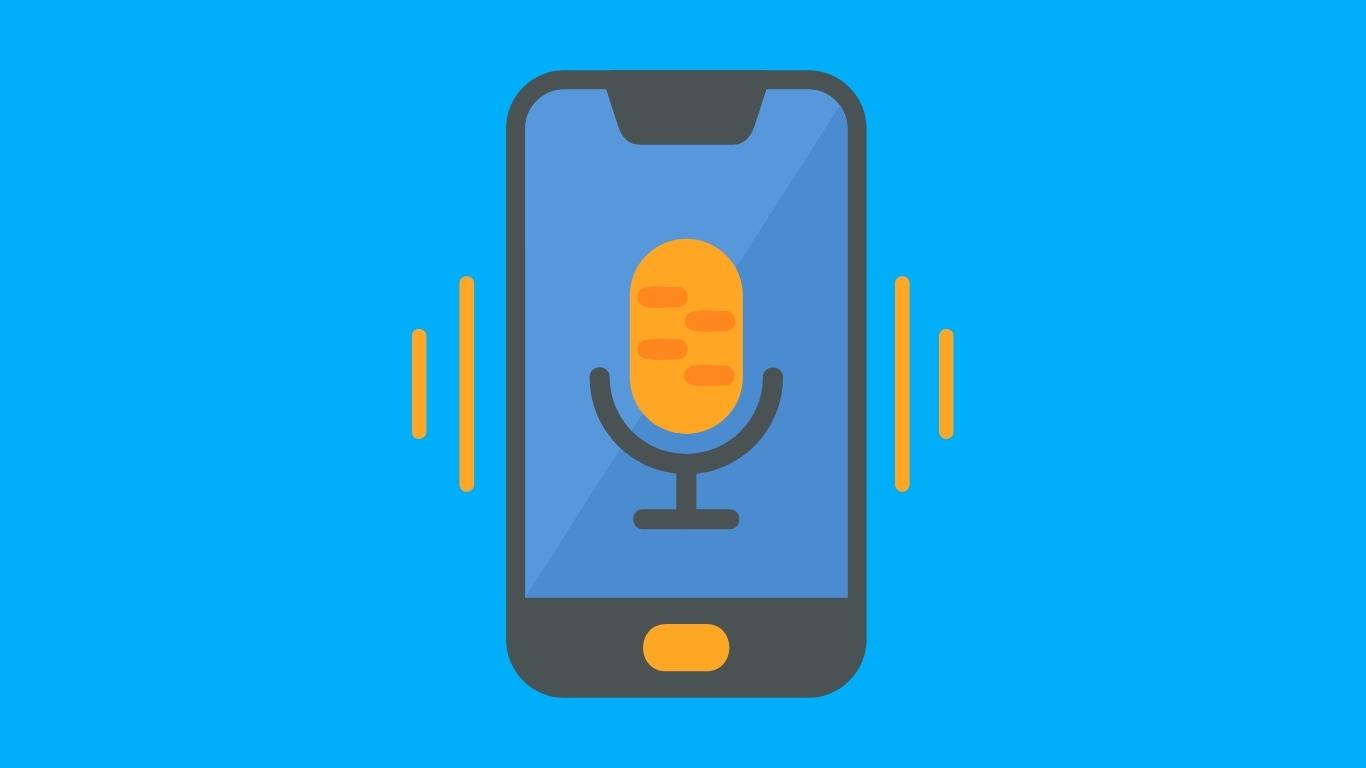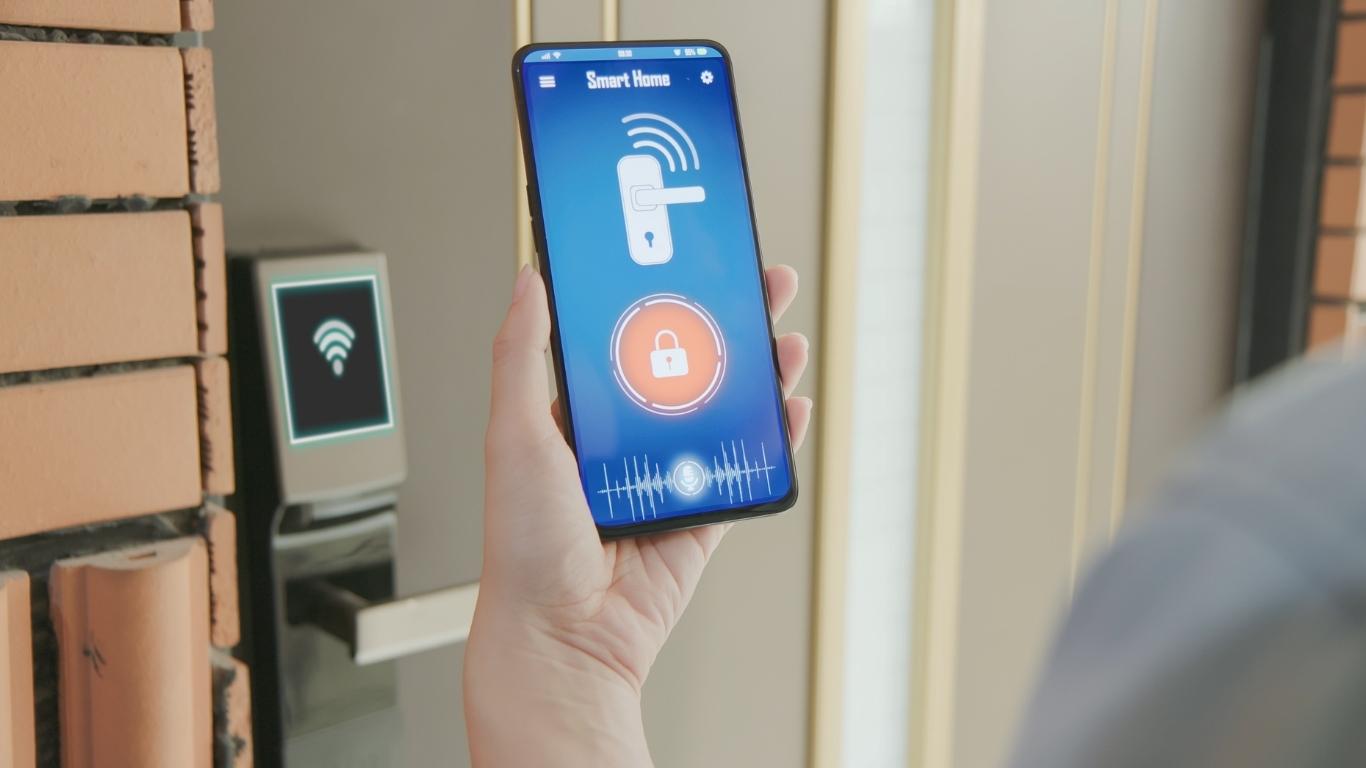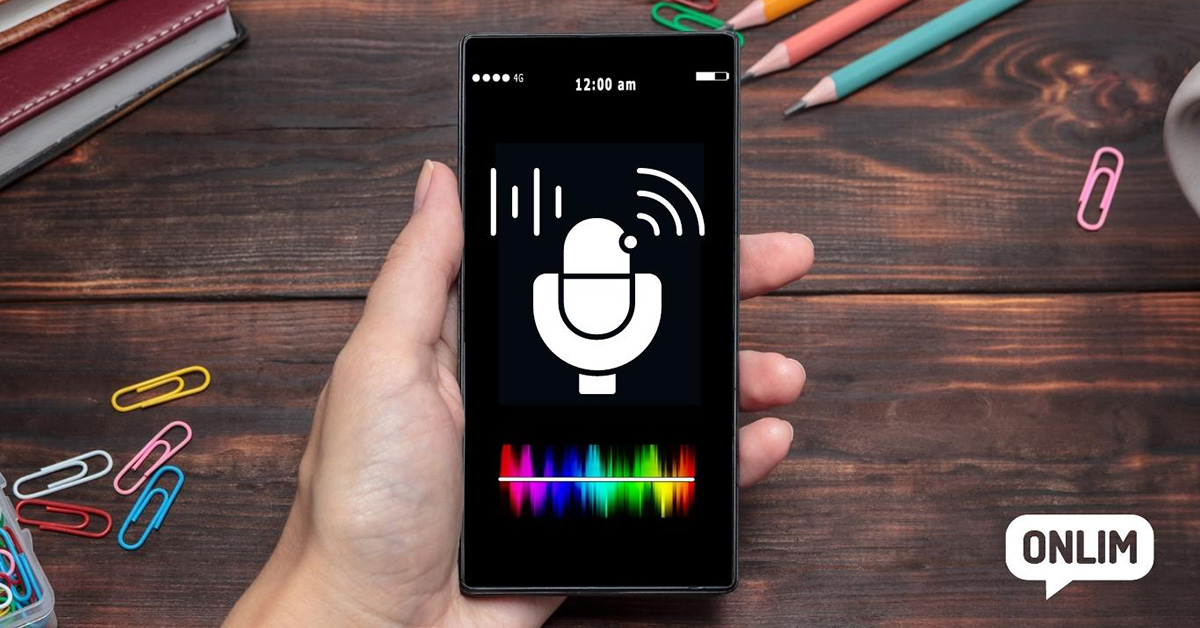Voice Assistants For Businesses — Everything You Need To Know! (Part 1)
From supporting your customer service to reaching new customers — voice assistants offer enormous potential for businesses that has yet to be exploited by many companies. Right now is a good time to start looking into this topic.
In this article, we explain why. In addition, you will receive valuable tips on how to get started with developing your own voice assistant.
By the way: our Conversational AI Platform supports (in addition to other channels) also the voice assistants from Google and Amazon. This means that your intelligent Onlim assistant can be made accessible to your users as a Google Assistant and Amazon Alexa action or skill. We can answer all your related questions, if you want to find out more – just get in contact with us.
What Are Voice Assistants?

While voice assistants were only known from science fiction series such as Star Trek or Knight Rider in the past, they have now arrived in the everyday lives of many consumers. They can be activated easily via voice command and help users place orders, play music or find the nearest flower shop.
Of course, these functions can also be performed using a smartphone, PC or laptop. The crucial difference, however, is the user experience. Thanks to voice assistants, it is no longer necessary to use an end device with a keyboard or a touchscreen.
This makes voice assistants not only a useful companion in everyday life, but also a great opportunity for companies. Because as a company you can communicate with users over another channel and offer them information, services, and products when they really need them.
How Voice Assistants Work

To provide an intuitive user experience, it needs the following three components:
- a microphone for voice input
- a loudspeaker for voice output
- and the appropriate software to process the input
The user can pass on his voice commands to the assistant via a voice message recorded by the microphone. The recorded voice message is processed and compared with a database using an algorithm. If the right answer is found in the database, the user hears it over the loudspeaker.
You may have wondered to yourself that your voice assistant only provides answers with a reliable internet connection. This is because the database is located on distributed servers in the cloud. This has the advantage that users can access a much larger amount of data. In addition, this data is expanded and optimized as the number of queries increases.
In addition to voice assistants on smartphones, smart speakers in particular have become established for use at home. By the end of 2020, 41 percent of Germans already owned a smart speaker. The trend: rising.
Which Are The Top 3 Voice Assistants?
The selection of established smart speakers is relatively limited and can be narrowed down to three main providers, all of which you’ve probably heard of: Google Assistant, Alexa and Siri.
Google Assistant is in first place. Around 23 percent of Germans use this voice assistant. Amazon Echo with Alexa is in second place with 18 percent, and Siri from Apple is only close behind with 15 percent.
Before we briefly discuss the individual smart speakers, it should be noted that the user experience is of course closely related to the devices with which the voice assistant interacts.
A voice assistant works best in its own digital ecosystem. Google Assistant works best with other Google devices and applications, such as Google Home, Chromecast, or Google Apps. The user experience for Alexa can be achieved primarily with devices from Amazon, such as Fire Sticks and tablets.
Furthermore, the smart speakers differ in other features.
Assistant from Google
Google Assistant has the best speech recognition. It is clearly ahead both in recognizing the spoken language and in classifying the correct context.

Another decisive advantage, especially for companies: Google Assistant has the largest user base and thus offers the most extensive target group for marketing campaigns. There are already more than 2.5 billion Android devices worldwide. On the one hand, this is because Google Assistant is already installed on all android devices by default and the Google Home smart speaker enjoys great popularity.
Another advantage is that Google is pushing the development of so-called actions. These are small functions with which the user can individualize the smart speaker. For example, this can be a translation function, assistants for the TV program or a read-aloud function for audiobooks. Google itself claims that over 1 million of these actions are now available.
Alexa From Amazon
It is true that Amazon’s voice assistant does not have as many individual functions as Google Assistant. Nevertheless, it can shine with its high adaptability. It can be expanded with around 100,000 so-called skills.

These skills equip the assistant with additional functions, similar to Google Actions. Every user can decide for himself which skills are important for him and thus personalize his assistant.
Siri from Apple
For all Apple users, Siri is a user-friendly voice assistant that primarily scores with its seamless interaction with Apple devices. The voice recognition not only works on new devices, but can also be used on older devices with appropriate updates.

Another advantage is the number of supported languages. Apple offers 21 languages. Coupled with good speech recognition and the ability to recognize the individual voice, this voice assistant offers helpful support for users all over the world.
The Potential Of Voice Assistants For Businesses
What simply sounds like nice gimmicks, is already a serious marketing channel that will continue to grow in importance in the future. Here are 3 reasons why you as a company should invest in voice assistants today.
1. The Internet Of Voice Is On The Rise
Some experts compare the Internet of Voice, i.e. information search via voice control, to the invention of the internet. There are already more than 1 billion end devices with voice assistants on the market today. A figure that will continue to rise in the future. By 2023, there are expected to be around 8 billion voice assistants.
This will also have an increasing impact on consumers’ communication behavior. It can be assumed that fewer and fewer consumers will communicate via email or chat. Instead, communication via voice assistants will gradually find its way into communication with companies.
But the Internet of Voice offers companies even greater potential than pure customer communication. Voice shopping, i.e., shopping via voice command, is expected to generate sales of 40 billion U.S. dollars by 2022. Voice shopping thus is a lucrative source of income that is worth tapping into.
2. Voice Discovery Gains In Importance
We have already mentioned it before: Both Google Assistant and Alexa already offer an almost limitless selection of actions or skills. Of course this is great for the users, but it also means that it is becoming increasingly important for companies to find ways to get found and to stand out from the crowd.
Competition is also getting tougher around search engine optimization. Whereas in the past companies wanted to get on the first results page, today they have to achieve “position zero”. This is because a page of relevant results, where up to 10 results are shown, doesn’t exist in voice search. Usually, users are only shown the top result. So, it’s all or nothing.
That’s why it’s important for companies to start thinking about the Internet of Voice today. You need to find a way to position yourself in the market and include voice discovery as an elementary component of your marketing strategy.
3. Now Or Never — The Importance Of Brand In Voice Search
Another important reason why it is important for companies to act as quickly as possible is naming Google Actions and Alexa Skills. Because this is very strict.
For example, names that are too generic are not allowed and a name that has already been registered once cannot be assigned a second time. So, to secure a well-named Alexa Skill and Google Action, you should be quick.
At the same time, the brand name and its recognition will be an effective way to stand out from the competition. For example, if the user uses the brand name in a search query, only matching shops will be suggested.
For example, a user who asks, “Siri, where can I buy Hugo Boss business shirts?” will only receive shops that offer the corresponding brand. Past marketing campaigns focused on increasing brand awareness will definitely pay off in this case.
How Do Companies Use Voice Assistants Already?

In addition to being used to complement the marketing strategy, voice assistants offer other promising use cases for companies. For example, they are often used as phone bots and within company apps.
According to the study “The Power of Bots” by The Academic Society for Management & Communication, voice assistants are being used for the following three use cases:
- Customer service support
- Internal of employees (e.g., for knowledge sharing, networking, onboarding)
- Personalization of online presence
These use cases offer significant assistance as well as additional service, especially for customer service.
For example, in the form of the following offerings:
- Product advice & information research:
One of the strengths of voice assistants is the fast access to information. In a matter of seconds, they can find relevant information about a product or service and make it available to the customer. Internally, a voice assistant can also make searching for relevant information much easier. - Troubleshooting:
In the event of recurring error messages or customer problems, voice assistants can be a first point of contact. Especially if the problems are easy to solve, a voice assistant may already be sufficient for troubleshooting. - Appointments:
Making appointments is also an area that can be outsourced to a voice assistant. Users can make and change appointments as well as receive reminders without the need for a human employee. - On-site services:
Voice assistants can be of great help not only by phone, but also directly on site. For example, they can provide hotel guests with relevant information about the surrounding area while they are in their room, or be an easy way to activate a wake-up call or order something from room service. - Order tracking:
For customers eagerly awaiting a package, this feature is worth a mint. They can check the status of the delivery via the voice assistant as often as they want after placing an order. - Refunds:
Online shopping is used by more and more users. But, they are not always satisfied with the products ordered. Returns can also be handled conveniently via a voice assistant. - Applications and registrations:
Whether registering for a gym, a loan or applying for a new job — Voice assistants make it particularly easy to enter the required information without having to type everything into a form.
Best practice examples – These brands are already successfully using voice technology

Below are some examples of how brands are using voice assistants to improve their customer experience, market their products and automate customer service.
Nike
Nike has partnered with Google to create a unique voice shopping experience for consumers. In 2019, the duo launched the first voice-activated shoe sale. The aim was to promote its most futuristic pair of shoes, Adapt BB.
The shoes debuted during an NBA game between the Lakers and Celtics on the feet of NBA stars Kyle Kuzma and Jayson Tatum and garnered a lot of attention during the game. As the halftime break began, the commentator announced to fans that the only way to grab a pair of Adapt BBs was to ask Google Assistant how to buy the shoes. The shoe sold out within 6 minutes.
Coca-Cola
Coca-Cola launched several voice-based promotions in 2020. In Australia, Alexa users could ask the voice assistant to share a Coke (Alexa, Share a Coke) to receive a free, personalized Coke bottle.
In the US, users could ask Alexa for a sample of the new Coca-Cola Energy drink. A promotion linked to the Coca-Cola Super Bowl ad that ended immediately when the samples ran out.
Walmart
Walmart has already had several experiences with voice technology. Back in 2019, the company partnered with Google to enable Walmart customers to shop for groceries via voice-based services. This service was also offered via Siri a few months later.
In 2020, Walmart developed a virtual assistant for all employees. The Ask Sam app is used to improve coordination within and between Walmart shops. Thus, the embedded voice assistant answers employees’ questions about product prices and locations, either for their own use or to answer customers’ questions. It also informs them about policy changes and emergencies.
KFC
KFC was the first company to use Amazon’s Brand Voice feature. With Brand Voice, Amazon engineers help customers develop a custom voice for their brand based on recordings with a voice actor. Amazon’s deep learning technology then teaches Alexa to speak like the actors.
At KFC, the Alexa Skill was thus equipped with a voice that sounds like Colonel Sanders.
US Bank
Voice technology has also broken new ground in finance over the past years, and US Bank’s voice assistant embodies this trend. The smart assistant, embedded in the bank’s app, allows users to carry out their banking requests via natural language.
The virtual assistant can complete transactions and transfers, retrieve bills and spending history, and manage credit cards. If there is a query that the AI assistant cannot answer, it connects the user with a human employee via text messaging or a phone call.
1-800-Flowers.com
This floral giant is a long-time innovator on the automated customer service front. The company allows customers to place orders via Samsung Bixby, Google Assistant and Amazon Alexa. For maximum convenience, 1-800-Flowers.com offers several payment options for voice orders, including Samsung Pay, Google Pay, Apple Pay and Amazon Pay.
In addition, the floral gift retailer has integrated its own intelligent assistant. With the company’s new voice-based self-service, customer queries are answered around the clock. To provide personalised service to returning customers, the AI assistant learns with each customer interaction.
This once phone-based retailer has not only successfully transformed into an online retailer, but is also a leader in the use of voice technology and AI in e-commerce.

In the second part of our series about voice assistants we will take a look at the challenges voice assistants face today, as well as what to expect in the near future. Consider subscribing to our newsletter to not miss the second part of our mini series.
Curious about the capabilities of a fully featured, yet user friendly Conversational AI platform? Take a look at our unique, knowledge-based solution.
Whitepaper: More Knowledge For Chatbots And Voice Assistants
In the whitepaper “More Knowledge For Chatbots And Voice Assistants” you will learn how meaningful conversations between humans and machines are made possible in automated customer communication through so-called Knowledge Graphs.
Tipps zur Erstellung eines effektiven Chatbot-Designs
March 2nd, 2022|

